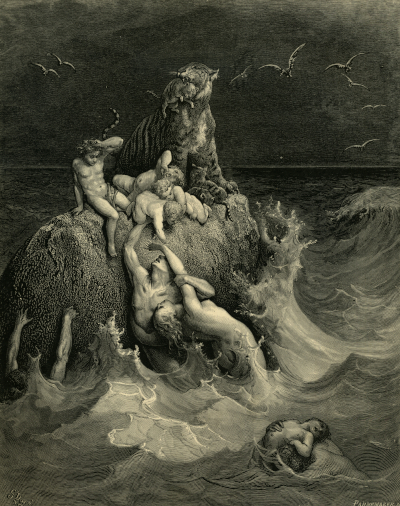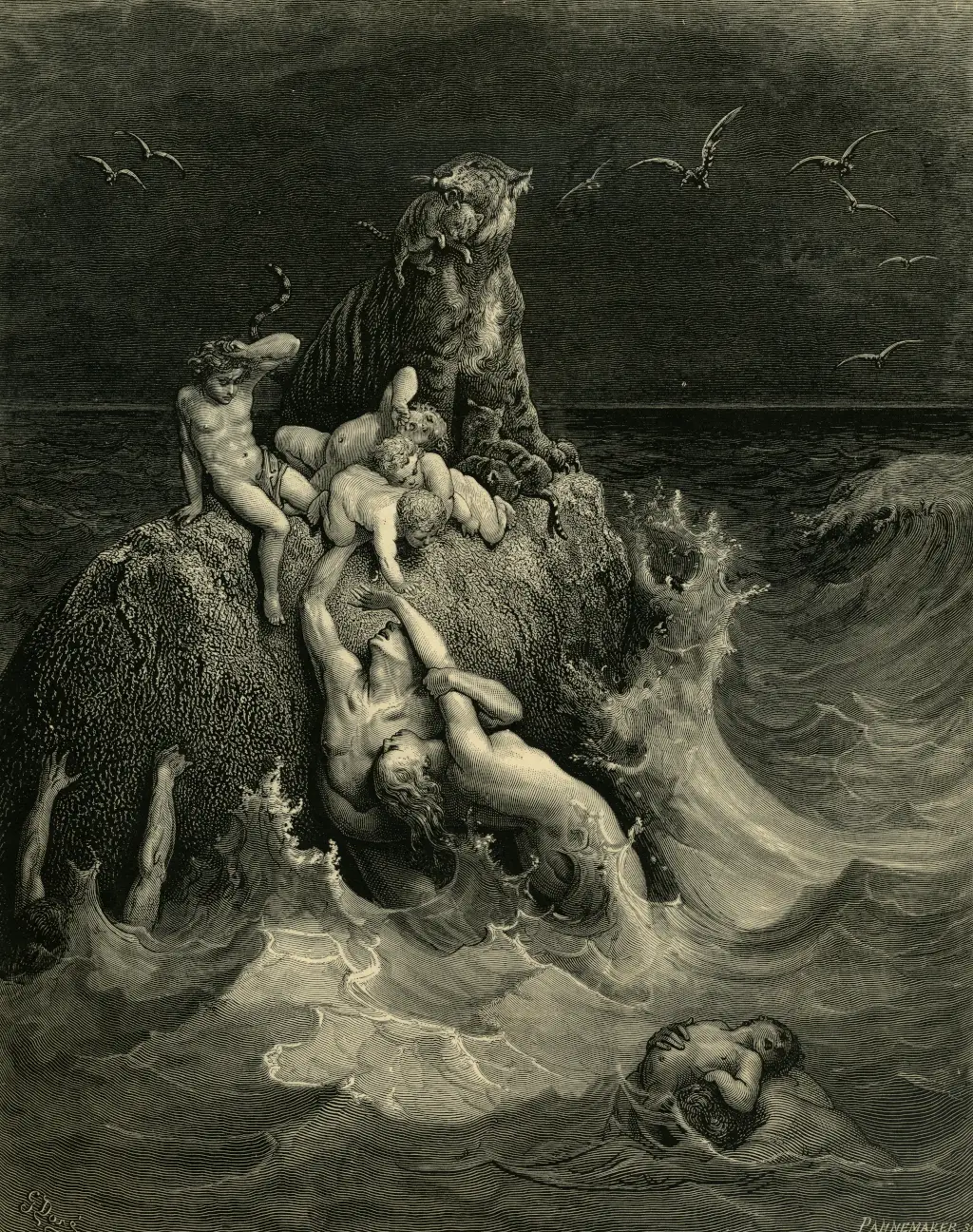 Buy Art Prints Now
Buy Art Prints Nowfrom Amazon
* As an Amazon Associate, and partner with Google Adsense and Ezoic, I earn from qualifying purchases.
The Deluge is a dramatic illustration by Gustave Doré that would be featured at the start of The Holy Bible: Containing the Old and New Testiments from 1866. The artist produced many drawings for this respected publication, covering famous scenes from religious history.
This extraordinary composition features a number of children desperately clinging onto a rock whilst adults are found just below, struggling in the wild waves of the sea. Many are indicated with just a single arm reaching out of the water, seemingly close to death. We find birds flying above, watching events from a safe position. A large wave sweeps in from the right, adding to these people's woes and the rest of the scene is darkened, underlining the mood of this content. The animal placed atop the rock reminds us of how The Deluge would impact every living land creature, without any real favour, and that it was just the birds who could enjoy relative safety. The story itself from the Bible is perfectly suited to the dramatic, emotion-filled work of this artist and he would have seen the potential of this content once the commision was requested. During the 19th century religious art was still common in British and French art, but was joined by a number of alternatives and so there was plenty of scope for variety within an illustrator's career by that point. Gustave Doré's depictions of scenes from The Bible would help to boost his name in Europe, leading to further commissions across the 1860s.
The Deluge, or The Great Flood, comes from Genesis 8:3-4 in the Old Testament and is the seventh artwork in the publication. The illustrations either side of it were The World Destroyed by Water and The Dove Sent Forth from the Ark. Doré's illustrated Bible would be purchased by many during the late 19th century and it helped to establish his own artistic reputation. There was also influence in how other creatives would view these scenes from the Bible, such as theatre producers, such was its impact on the wider public. The artist produced 241 designs in total, covering both the Old and New Testament and many consider these creations, including The Deluge, to have been amongst his most significant and technically accomplished contribtion. The popularity of this publication led to several more notable commissions later in the same decade, and this was to be his busiest and most important period from a career which would last several decades. He remained active right up until his relatively premature death in his early fifties, leaving behind several projects as incomplete. He was much loved within his own time, and perhaps more famous then because of the popularity of book illustration as compared to the present day.
The Bible series including some other famous creations, such as The Creation of Light and The Vision of Death, both of which today are considered amongst his finest artworks and it is fair to add the powerful scene of The Deluge into that prestigious bracket as well. Even more than a century later one will still find new publications of this series appearing right across the world and some of his work has never actually ever been out of print. The slight fall from fashion of traditional illustration has made him more of a niche artist today, but those who study art history in detail will likely be very familiar with his work. He offers something very different to the modern day, with traditional techniques that concentrated on quality and expertise which during that era was encouraged more than it is perhaps today. His collaboration with highly skilled assistants enabled him to please a large number of patrons and continue to experiment with other mediums as well, often on the very same subjects.





